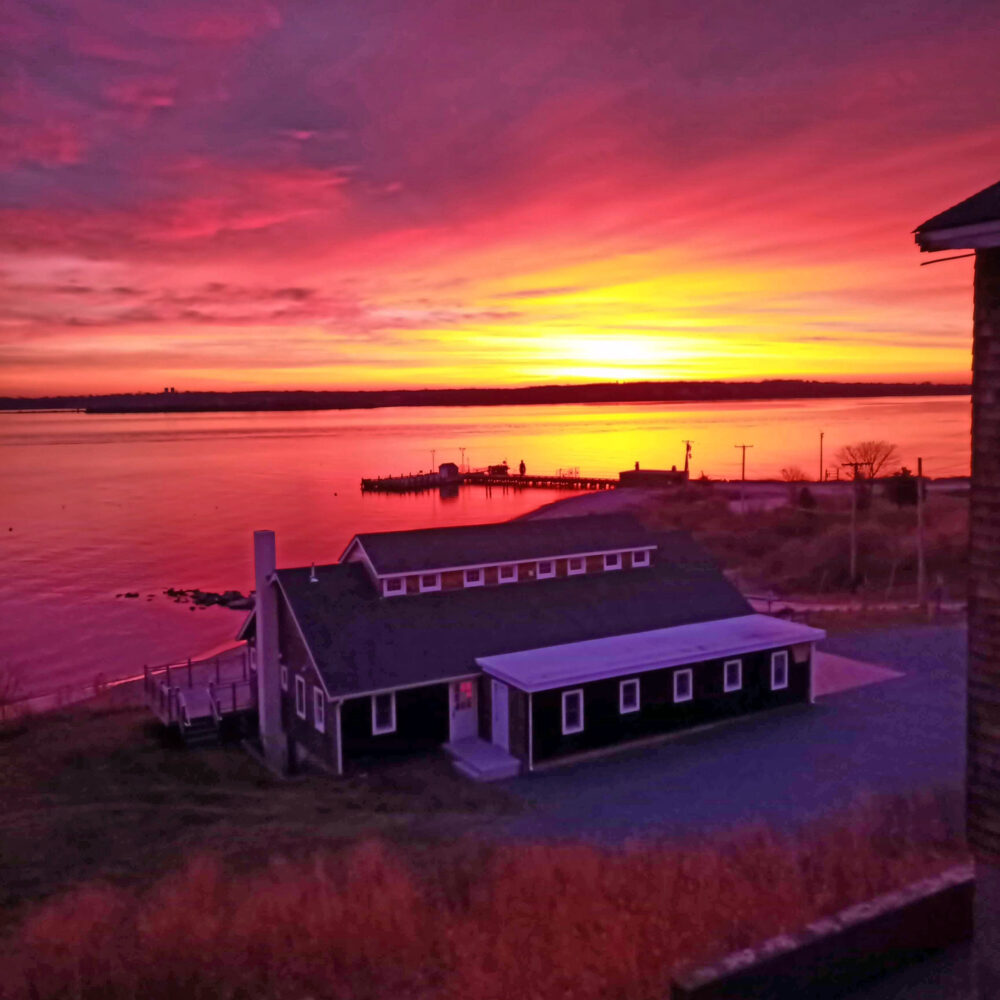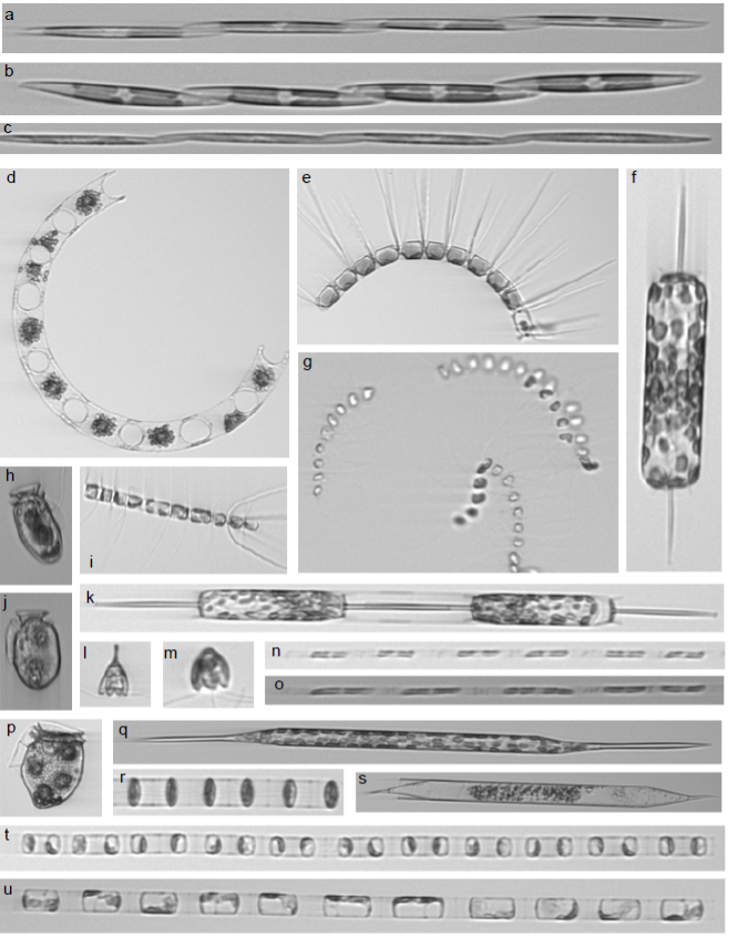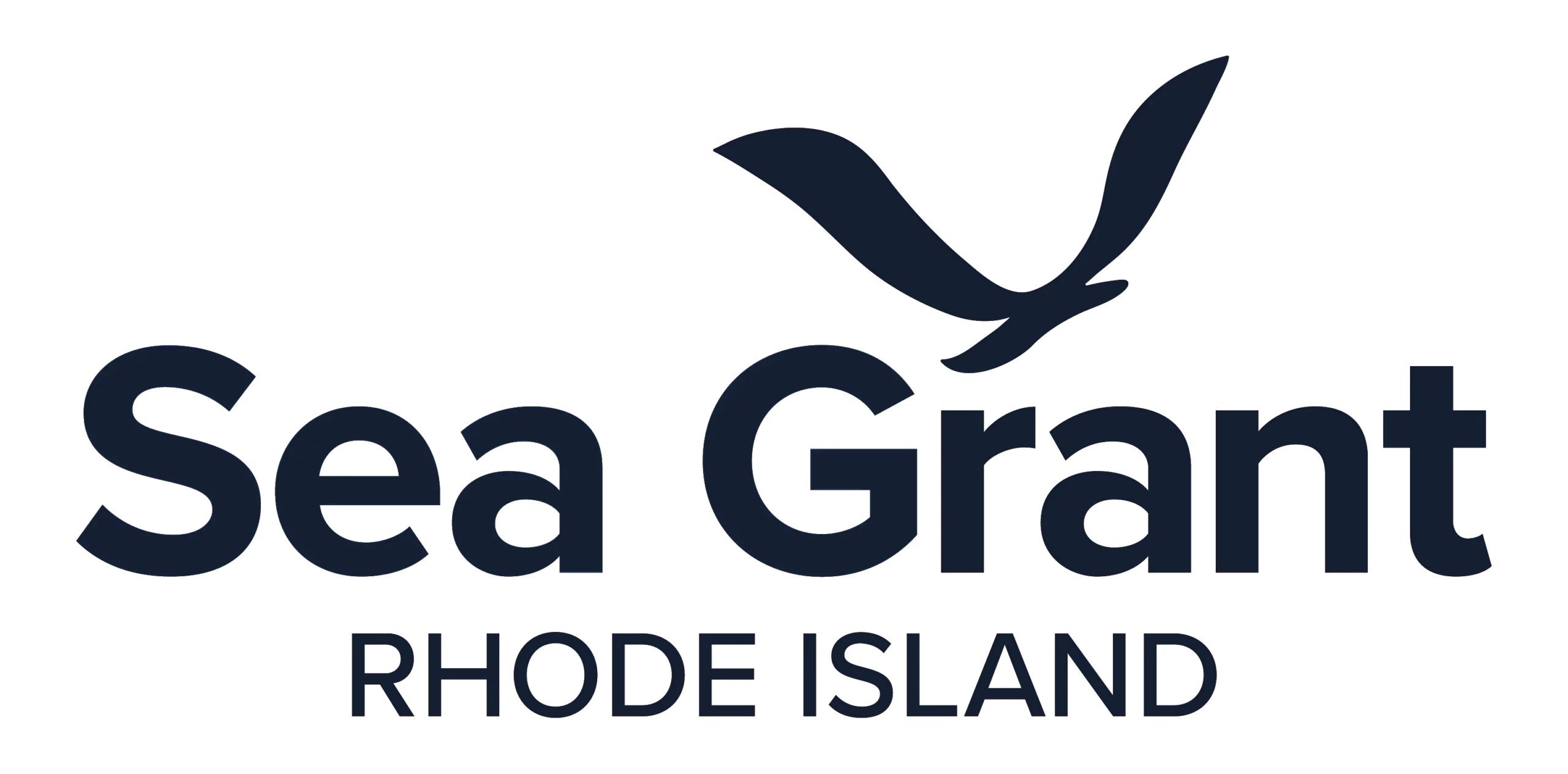Temperature and interactions with other types of phytoplankton appear to indicate heightened domoic acid risk from Pseudo-nitzschia
Harmful algal blooms closed portions of Narragansett Bay to shellfish harvesting twice in the last decade—once in September 2016 and once in March 2017. Since then, researchers have been trying to determine what factors lead to harmful algal blooms (HABs) so regulators and shellfish growers can be better prepared.
HABs occur when phytoplankton—in this case, the genus Pseudo-nitzschia—capable of producing a toxin—in this case, domoic acid, a neurotoxin—grows in abundance and does, in fact, produce that toxin in significant amounts. What conditions cause this to happen, though, has been unclear. There are times when Pseudo-nitzschia blooms without causing harm, adding another layer of mystery to the problem of HABs.

The imaging instrument used in this study was located at the URI Graduate School of Oceanography pier. Photo by Vitul Agarwal, a former GSO graduate student now a post-doctoral researcher at Scripps Institution of Oceanography.
Rhode Island Sea Grant funded several research projects to better characterize Pseudo-nitzschia blooms and the conditions leading up to them. One of these projects, led by Colleen Mouw, an associate professor in the URI Graduate School of Oceanography who studies phytoplankton, looked at the interactions among environmental parameters, phytoplankton genera, and their response to elevated Pseudo-nitzschia abundance. She and her graduate students used a device called an Imaging FlowCytobot, which is a flow-through system that captures images of phytoplankton cells that pass through the instrument, which for this project was located at the GSO pier in Narragansett. This tool allows researchers to characterize not only the amount but also the size and taxonomy of the phytoplankton cells. Mouw’s team coupled this with environmental data from the Narragansett Bay Fixed Site Monitoring Network.

Of the many types of plankton in Narragansett Bay, only some produce toxins, and even then, only some of the time. URI researchers used advanced imaging technology to look at the size and abundance of plankton throughout the year to see how environmental conditions affected them. Pseudo-nitzschia (a, b, and c in this figure) is the genus responsible for the HAB events in the bay in 2016 and 2017, and seems to react to temperature and interactions with other phytoplankton. Figure in Agarwal, V., V. Sonnet, K. Inomura, A.B. Ciochetto, C.B. Mouw (accepted) Image-derived indicators of phytoplankton community responses to Pseudo-nitzschia blooms, Harmful Algae
The researchers found that Pseudo-nitzschia tends to bloom concurrently with or right after other phytoplankton genera. Such bloom periods coincide with higher water temperatures and lower salinity. Pseudo-nitzschia abundance tends to increase the most from March-May and peaks during May-June, whereas the biovolume and width of Pseudo-nitzschia chains increase the most during Jan-Feb. Their results also suggest that some water temperatures (0-8°C or 16-25°C) are more likely to host species of concern. The warmest water temperatures (>20°C) were when high Pseudo-nitzschia abundance, high chain width, and high estimated biovolume were observed.
These results, researchers say, suggest that when it comes to understanding the risk of harmful algal blooms, it may be beneficial to monitor the behavior of the larger phytoplankton community instead of solely focusing on the toxin-producing species.
Moreover, while abundance remains crucial for predicting blooms, variations in width and biovolume could also offer insights into periods of heightened domoic acid risk. All of this is possible with the use of advanced imaging technology, such as the Imaging FlowCytobot, which offers a potential solution for overcoming the limitations of manual phytoplankton counts and toxin sampling.
“When we try to pick out anything by itself, we find it hitched to everything else in the Universe.” – John Muir
Vitul Agarwal, former GSO graduate student who worked on this project, suggested that this quote aptly characterized this research. It also characterizes the study of HABs that Rhode Island Sea Grant has funded over the years. Scientists from different disciplines looked at HABs from their realms of expertise and have each added to our understanding of HABs while demonstrating how chemistry, biology, fluid dynamics, and so on are all connected. Rhode Island Sea Grant will share updates from these projects in our monthly newsletter. To receive it, sign up here.
—Monica Allard Cox, Communications Director
